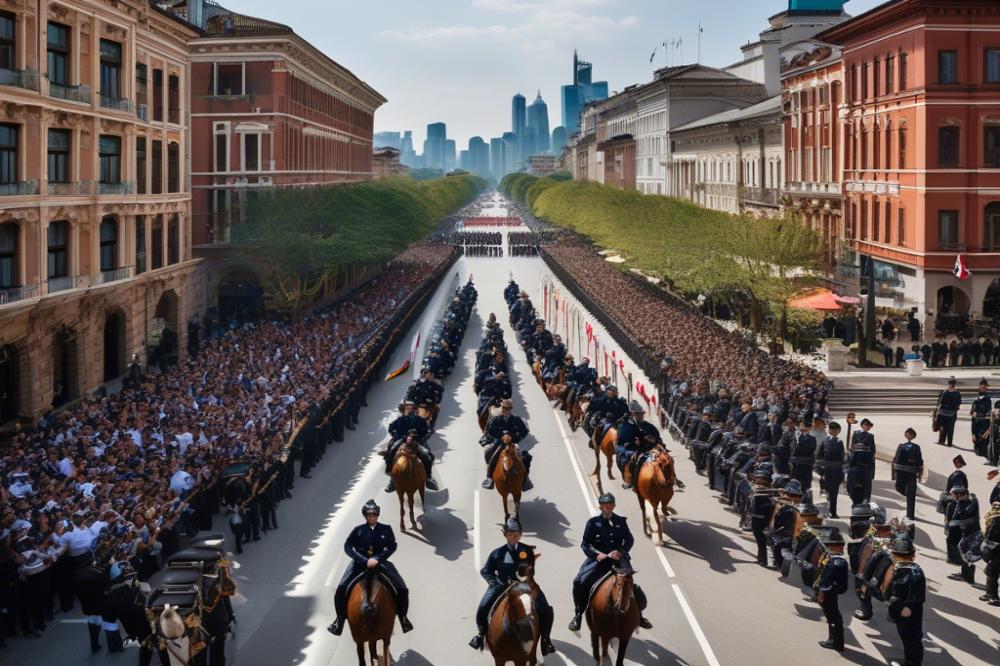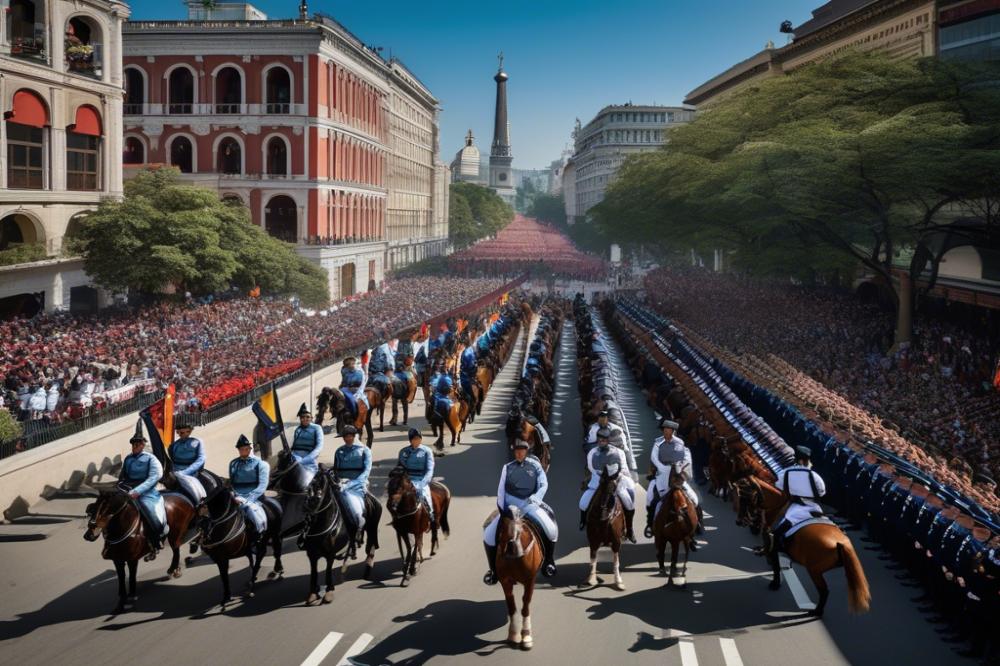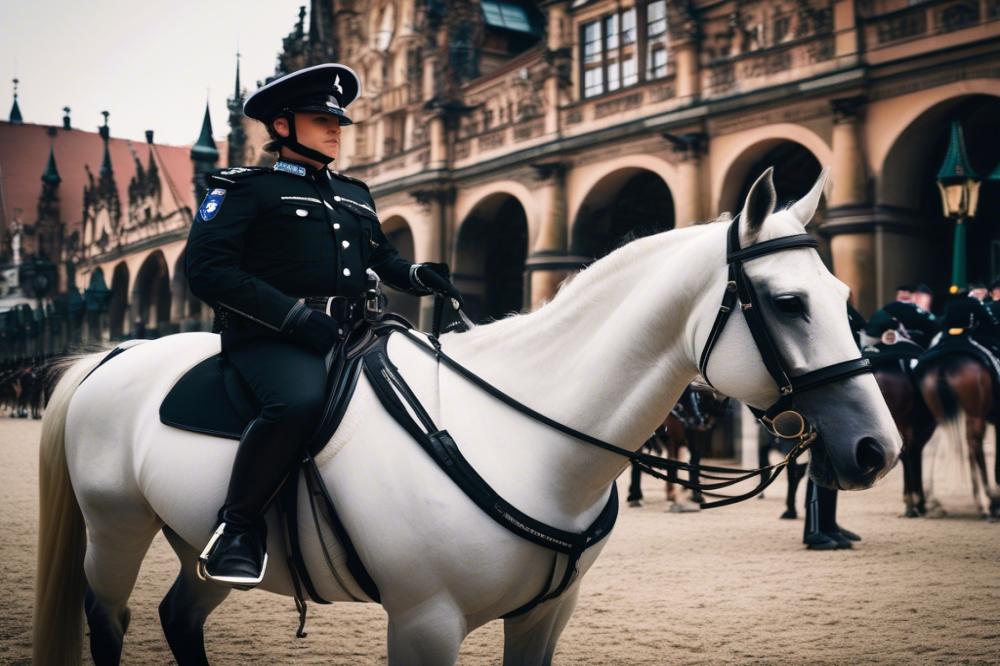German Precision and Equine Partners: How Horses Assist Law Enforcement in Germany
The role of Horses in Law Enforcement spans across many nations. These remarkable animals aid officers in various ways. From crowd control to making connections with communities, Equine Partners bring a different dynamic to policing.
Police horses have their roots in history. Their presence during public events promotes safety and order. Individuals often feel more comfortable around them. The sense of calm they provide can transform tense situations. In some countries, horseback officers patrol bustling streets to deter crime. The powerful stature of these animals commands respect and attention.
Germany has developed its own unique practices regarding police horses. Precision and discipline reflect the country’s values. Training programs for law enforcement steeds emphasize obedience and responsiveness. Such measures create highly effective partnerships between officers and their mounts.
Through diligent training, both horse and rider become a cohesive unit. This bond facilitates communication and enhances safety for everyone involved. In urban environments, police horses navigate crowds and streets with ease. They play a crucial role in maintaining order during large events, such as concerts and festivals.
Horses in Law Enforcement serve as more than just tools to ensure safety. They foster a connection with the community. In Germany, many residents view them as symbols of trust. The sight of a mounted officer can ease concerns, making neighborhoods feel more secure. Understanding each of these roles highlights the importance of these magnificent animals in modern policing.
Horses in Law Enforcement

Role of Horses in German Law Enforcement
Horses serve an essential role in the German police force. Their presence can calm crowds during events. Officers on horseback are often seen at festivals or protests. People tend to react differently when they see a horse. The animal’s size and strength can deter potential troublemakers. Officers riding horses have a higher vantage point, allowing them to monitor situations better. This ability to see from above is especially beneficial in busy urban settings.
Brief History of Equine Assistance in Police Work
The use of horses in policing is not a modern concept. Many centuries ago, cavalry units were used for military purposes and crowd control. In Germany, mounted police became more common in the 19th century. These units have evolved over time, adapting to public needs. Today, various police departments across the country maintain equine units. Their history reflects a long-standing partnership between humans and horses in maintaining safety.
Benefits of Using Law Enforcement Horses in Various Scenarios
Horses provide several advantages in law enforcement. Their height allows officers to see over large groups of people. This is crucial during large events like concerts or sporting matches. Additionally, the presence of a horse can create a sense of security for the public. Officers on horseback are often more approachable, encouraging communication. They can also navigate areas that are difficult for cars or bicycles. This flexibility expands the police force’s ability to respond to various situations. Furthermore, horses can work in diverse terrains, from urban streets to rural areas. Their physical capabilities allow for effective crowd management and search operations.
Horses contribute significantly to community policing efforts. They foster connections between law enforcement and citizens. Events featuring mounted police often draw positive attention. These animals are not just tools; they become part of the community fabric. Each interaction helps build trust and understanding.
German police and mounted units

Structure of mounted units in German Police
Mounted units in German police forces are organized at both regional and national levels. These special units often consist of riders and support personnel dedicated to community safety. The mounted police work alongside standard officers, enhancing visibility and approachability. In larger cities, you might find separate divisions focusing on crowd control during events or ensuring safety in public spaces. Coordination between mounted officers and fellow law enforcement members is crucial. Each mounted unit typically serves specific areas, allowing for specialized training and tactics.
Types of Horses Used in Law Enforcement
Various breeds are selected for their strength and temperament. Many units favor warmbloods for their size, agility, and calm demeanor. These horses can handle the demands of their role while remaining sturdy in various conditions. Other breeds might also be utilized based on specific needs, such as Arabians and draft horses. The choice of horse often reflects the particular responsibilities of the unit. Factors like endurance, trainability, and health are carefully considered when making these selections.
Importance of Horse Handling Skills for Police Officers
Police officers in mounted units undergo rigorous training to develop essential skills. Handling horses requires not just knowledge but also a deep understanding of animal behavior. Officers learn how to communicate effectively with their equine partners. This connection helps build trust and ensures a more harmonious working relationship. Additionally, skills in riding and caring for horses are indispensable. By mastering these abilities, officers can respond effectively to situations on the ground. Good horse handling reduces risks for both the officer and the animal in the busy environments they often encounter.
Equestrian Training for Law Enforcement Horses
The training regime for police horses in Germany is extensive and demanding. Each horse must develop a strong bond with their handler, which is crucial for effective teamwork. This connection lays the foundation for the range of tasks they will face in the line of duty.
Several specific training programs exist within the country. Many of these are designed to cater to the unique needs of police work. They include obedience training, socialization with various stimuli, and controlled exposure to crowds. Programs often focus on preparing horses for experiences they may encounter during public events or protests. Each horse is evaluated on various parameters before and after their training sessions.
Key Aspects of Equestrian Training
Precision work plays a significant role in equestrian training. Officers want the horses to respond accurately to commands, whether in urban settings or rural environments. Attention to detail is important; a horse needs to navigate tight spaces among crowds without losing composure.
Crowd control is another essential area of focus. Horses are trained to stand calmly amidst loud noises and chaotic situations. The goal is for the animal to remain steady, allowing officers to manage crowds effectively. Training includes gradually introducing horses to different types of people and situations, building their confidence over time.
Both of these aspects are essential to the overall success of police operations. In a country like Germany, where events can draw large crowds, well-trained equine partners provide a sense of authority and help maintain order. Each horse’s ability to perform under pressure reflects the thoroughness of their training program.
In essence, the process ensures that horses do not just become tools for law enforcement but partners that officers can rely on. A well-prepared horse can contribute significantly to the safety and efficiency of police work. Dedicated handlers play a vital role in nurturing the skills their horses acquire through these rigorous training schedules.
Applications of Police Horses in Germany
Police horses play an important role in crowd control, especially during major public events. These majestic animals provide a physical presence that can help deter unruly behavior. Officers mounted atop their steeds can easily survey large crowds, offering a higher vantage point. When tensions rise during festivals or protests, the calming nature of horses can diffuse heated situations. Their size and strength act as a natural barrier against potential violence, helping to manage crowds effectively.
Additionally, police horses are valuable assets in search and rescue operations. Their keen senses allow them to cover extensive areas, making them ideal for locating missing individuals. Rural and urban environments pose unique challenges, but horses can navigate these terrains much easier than officers on foot. They help to reach places where vehicles may not fit. In flooded areas, for instance, their mobility could prove lifesaving for stranded victims.
Mounted units are part of Germany’s law enforcement strategy. During large events such as football matches, they interact directly with the public. Horses enable officers to communicate more effectively, building rapport with attendees. This connection can help calm anxious crowds. A simple pat on the horse’s neck might ease a worried spectator. Such positive interactions can create a safer environment for everyone involved.
Coordination with local communities is key for mounted police. Officers often participate in neighborhood safety events, fostering trust and support. This outreach builds a collaborative relationship between the police force and citizens. People tend to feel more secure when they see a friendly horse and officer patrolling their area. The presence of these animals encourages a sense of unity.
Challenges and Considerations
Mounted police units in urban areas face significant hurdles. One main issue is the limited space. Streets can be crowded with cars and pedestrians. This tight environment can make it hard for officers to maneuver their horses effectively. Navigating through traffic presents risks for both the animal and rider.
Welfare of police horses is a critical topic. Officers must pay attention to how horses react in hectic situations. Stress can be detrimental to their health. Maintaining a balance between operational duties and the animals’ comfort is crucial. Regular breaks and proper care help mitigate stress that both horses and riders experience.
Training is another vital aspect of working with these animals. Police must adapt to changing scenarios regularly. Horses need to be accustomed to various sights and sounds in the city. Routine drills prepare them for unexpected events. Continuous education for officers also plays an integral role. Knowledge helps ensure the safety of both the horse and its rider.
Final Reflections on Horses and Law Enforcement
Horses have played a significant role in law enforcement across Germany. Their ability to navigate crowded areas and maintain calm under pressure has proven invaluable. Mounted units enhance the capability of the German police, creating a unique presence at various events and gatherings. This partnership not only assists in crowd management but also fosters a positive connection between officers and the community.
Looking ahead, the future for mounted units appears bright. As cities evolve, the adaptation of these units to modern challenges will be crucial. Continued training and the integration of technology could improve their effectiveness. Moreover, fostering community relations remains essential. People often feel reassured seeing officers on horseback, bridging gaps and building trust.
Ultimately, the bond between horses and law enforcement is a testament to collaboration and tradition. These animals do more than just patrol. They symbolize strength and reassurance in uncertain times. As the German police continue to rely on these equine partners, the profound impact of this relationship is likely to endure for years to come.



